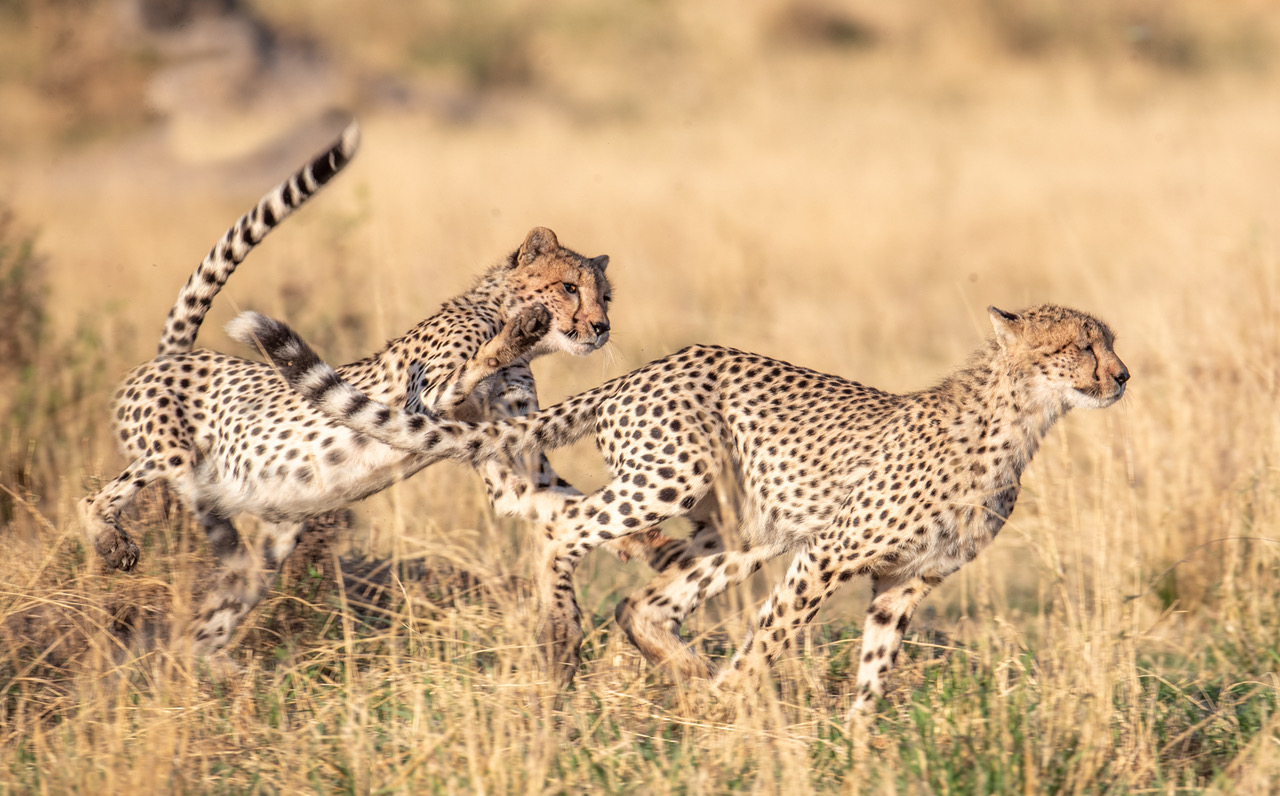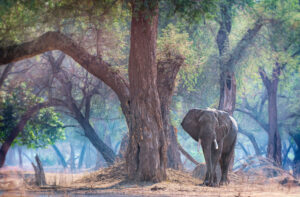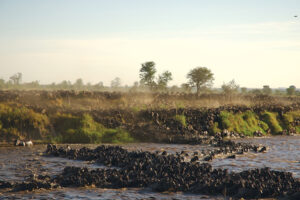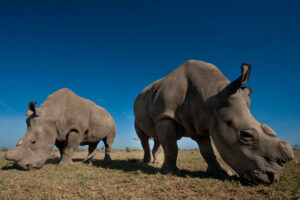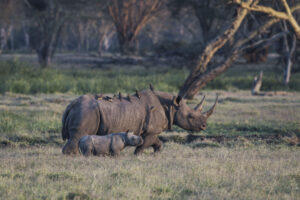
Chitabe, a privately owned concession in the Okavango Delta, is best known for its resident wild dog population. But now a particularly courageous, resilient cheetah is making a name for herself. Known as “Supermom”, the cat’s unbeatable parenting powers have stunned guests at Chitabe Lediba and Chitabe Camp and the camps’ owner, Dave Hamman, too.
“It’s not uncommon for cheetahs to have litters of five or six cubs,” Dave explained, “but what makes Supermom stand out is that 90% of her cubs have survived into independence. Compared with the official survival rate of 5%, that’s phenomenal – especially here in Chitabe, where we have such a high density of other predators. Typically, cheetahs tend to move to new areas rather than face such strong competition, but every time this cat has young cubs, she’s back at Chitabe. She first came into the area when she was an adult, so we’re not sure of her age, but we’ve photographic evidence that she’s successfully raised three big litters in this area. While she’s not the only female we’ve seen with five cubs, her parenting skills are on a different level.”
The formidable mother’s bravery, intelligence, and defensive instincts have seen all but one of her last litter of six cubs survive to sub-adulthood.
“Most cheetahs we see are pretty timid and shy – they’ll back off and leave if they face a threat. But we’ve seen her defend a carcass from hyenas – physically go for them – and protect her cubs from a big male leopard. In just one morning, we saw her get chased by elephants before bumping into a leopard and then a hyena, but she just seems really aware and adapts quickly to threats.”
A superb hunter with a very high success rate, the cheetah is also a great teacher keen to pass on her skills.
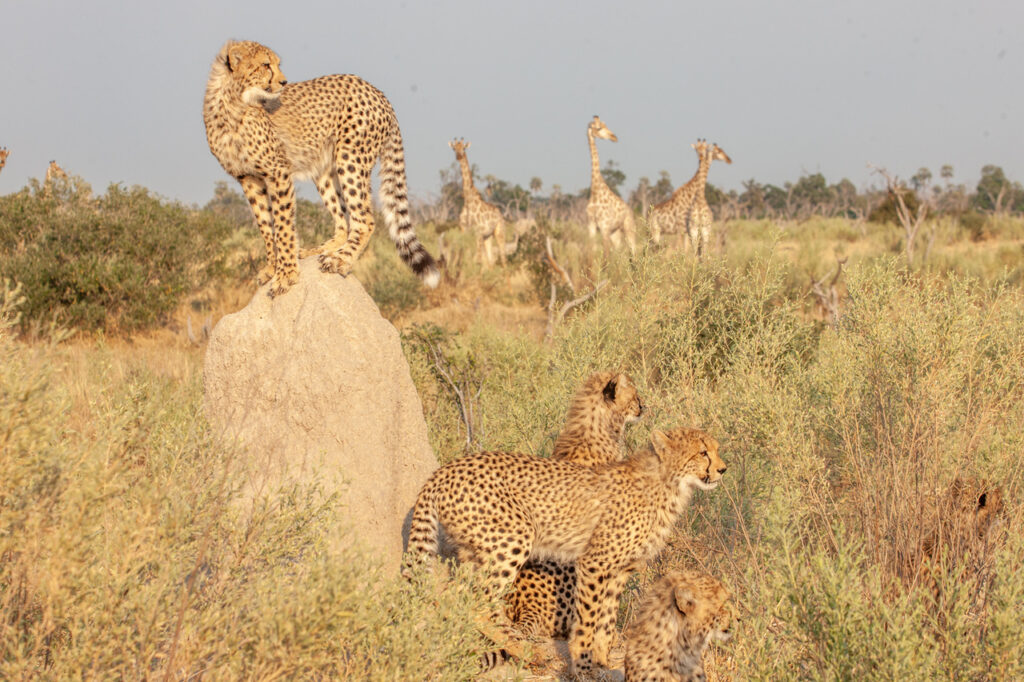
“Although difficult to prove scientifically, Supermom appears to teach her cubs at a younger age than other cheetah mothers would. I’ve seen her do things with them that have made me think, ‘Wow, they’re a bit young for this’, but she knows what she’s doing! Plus, when the cubs see her stand her ground against a hyena or leopard, they gain confidence and learn behaviour that they then adopt. Her behaviour flies in the face of what we commonly ‘know’ about cheetahs; she really is an exceptional mum.”
Supermom’s cubs typically stay with her for 14-18 months before heading out together to fend for themselves.
“But even then, it takes Mum a while to sever those apron strings completely. We’d see her alone and then back with the cubs,” Dave laughed. “Recent sightings, though, have been of the subadult cubs without her, all looking good and well fed. One of the females is now a brilliant hunter, too – clearly, she’s learned from her mum – and she seems to be leading the group, increasing their chance of survival. So maybe we’ll see the ‘supermom gene’ reproduced in future generations.”
Back in Kafue, the “magnificent seven” were released into their new, purpose-built boma. The next stage of their rehabilitation involved slowly introducing them to a mature lioness that would hopefully teach them the essential skills required for life in the bush. So, several months later, a lone mature female with no pride of her own was placed into the neighbouring enclosure. In time, the lions began to show interest and sat alongside each other on either side of the electric fence.
“To encourage this bonding process, we also fed them at the same time, albeit still separated by the fence,” explained Kafue National Parks’ Special Projects Manager, Andrea Reid. “Then, when the time felt right, we sedated the cubs slightly (the seven of them could have overpowered the female if things went wrong) and introduced them. There was a bit of slapping each other around, but nothing abnormal; eventually, they all settled down.”
Once the lions looked set to stay together, they were sedated and fitted with tracking collars before being driven to the release site. But there was still one final trick up the transfer team’s sleeve:
“During translocation, the adult female was loaded between two of the subadult females, and her scent rubbed all over the cubs. Ensuring they all smelled the same helped calm them, promoted bonding, and reduced the chance of them harming one another,” explained Andrea.
The lions awoke to find a hearty meal waiting, but since then they’ve been providing for themselves, and regular tracking flights suggest they’re coping well.
“The Kafue cubs are showing encouraging signs of independence. After their release, they explored their territory together, even successfully crossing the Kafue River. While one cub is no longer with the main group, and another’s collar has malfunctioned, the remaining lions have been spotted with the adult female,” Andrea told Expert Africa. “Their hunting together is a very positive development, indicating they’re learning the necessary skills to survive in the wild.”
Meanwhile, African Parks’ new monitoring teams have seen a marked reduction in the number of Kafue lions lost to snares. We wish them every success with their work.
© Abigail Flanagan
If you’ve been inspired and want to find out more, give us a call or enquire now to speak to an expert.
*A version of this article originally appeared in the April 2024 Bush Telegraph newsletter. You can read our recent newsletters and sign-up to receive these in your inbox on our Bush Telegraph newsletter page.
